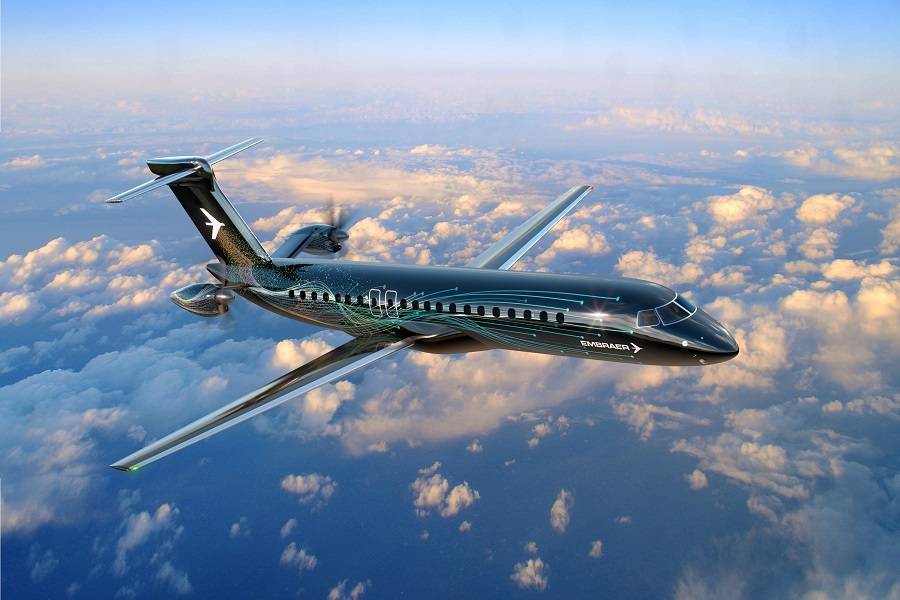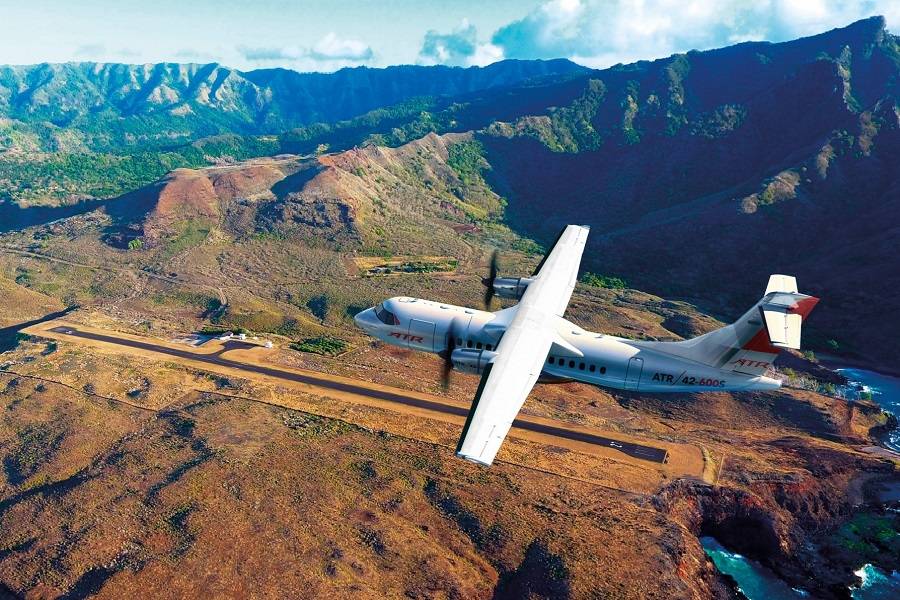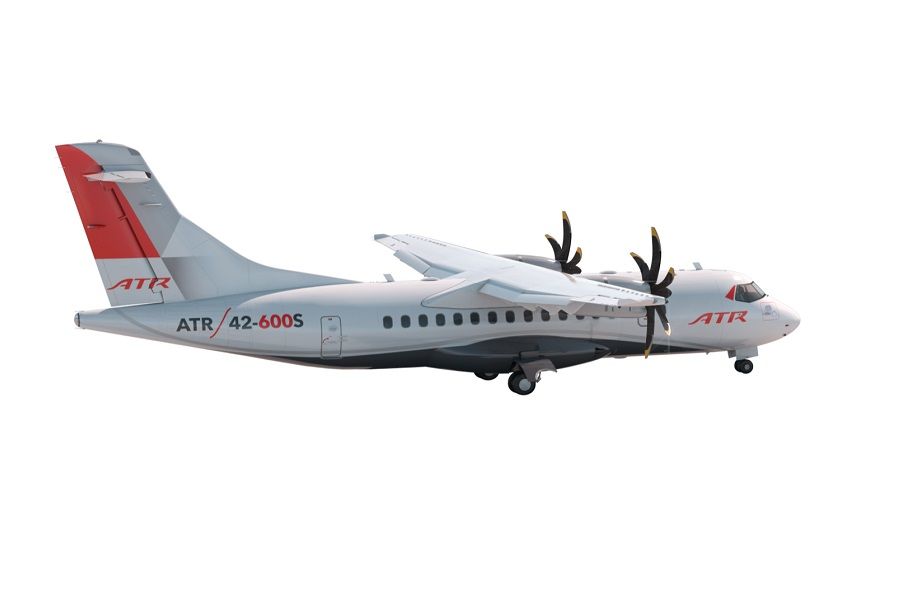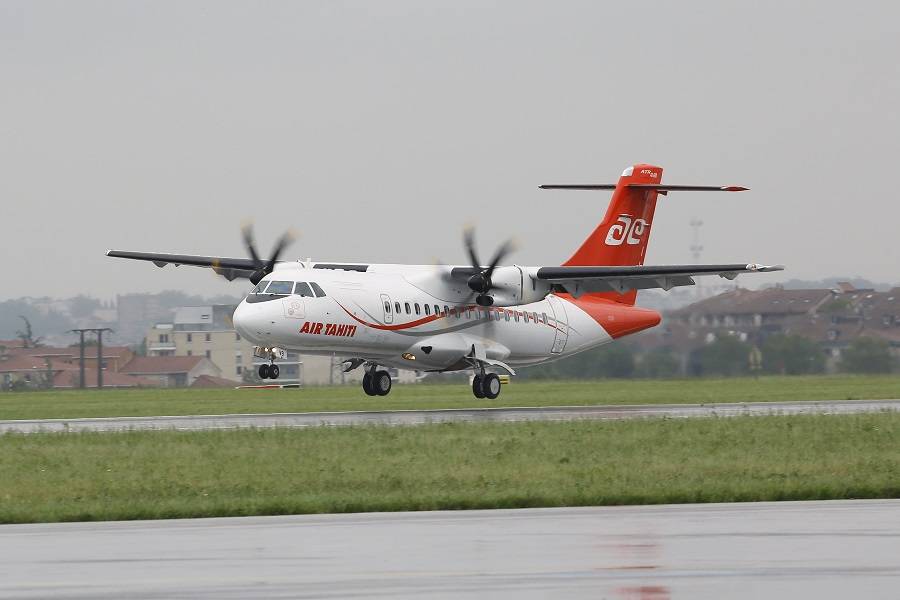When it enters service, the ATR 42-600S could give the company another selling point, opening new markets and extending the type’s life.
We don’t often hear news about new turboprop airliner designs. When it comes to planes with 30 or more seats, what we tend to see is updates of existing aircraft only. Embraer could soon change this, with something rather interesting and unusual-looking. But until they launch it officially, we have precious few choices in this market.

The Viking (ex-Bombardier) Q-400’s production is suspended – possibly for good. This leaves the Ilyushin Il-114-300 and the ATR-42/72 in the market. The former isn’t a likely option in much of the world, leaving the ATR family as the only available choice. The type entered service in 1985 but with the ATR 42-600S, the company plans to keep it around for longer.
ATR 42-600S – Market For A STOL 50-seat Turboprop
The current version of the aircraft needs 1,050 metres (3,445 feet) of runway length. The Dash-8 family evolved from the STOL-capable four-engined Dash-7. But the Dash-8-300 (i.e. the closest model in terms of seats) has similar runway requirements, as well. For some time now, ATR has been working on entering that lost STOL market, with the ATR 42-600S.

The “S” is for “STOL”, i.e. Short Take-Off and Landing. The manufacturer wants to bring the necessary runway length down to 800 metres (2,624 feet). This will mean that the ATR 42-600S will be able to operate from the kinds of airstrips that many 20-seat aircraft currently use. This obviously opens up many more airports, in some isolated places.
More importantly, this means that current operators of 20-seat aircraft will have the option of adding the ATR 42-600S to their fleets if they need to upsize. So ATR is bringing itself into a new market. The company projects a demand of over 500 STOL-capable aircraft over the next 30 years. And while this aircraft family is unlikely to stay in production this long, ATR wants to start the ball rolling.

What Makes The ATR 42-600S A STOL Variant
But all this hinges on getting the ATR 42-600S to achieve this short-field performance. The manufacturer will do this with a number of modifications. Firstly, the Pratt & Whitney Canada PW120 engines will change to a different version, that produces a bit more take-off thrust. The aircraft will also get an autobrake system.
The rest of the changes giving the ATR 42-600S its STOL performance are aerodynamic. Pilots will get the option to take off with flaps at 25 degrees. To compensate for the more powerful engines, the plane will have a bigger vertical stabilizer and rudder. The rudder will also have more deflection, increasing minimum control speed. Finally, the ATR family has a set of outboard spoilers, for use when manoeuvring in the air. The STOL variant will also use these spoilers on the ground.

The manufacturer will also introduce lighter seats and galley equipment, which will benefit the ATR 42-600S further. But these features will likely benefit the rest of the ATR 42/72 family as well. ATR officially launched the STOL project in 2019, with interest from several airlines and lessors. The manufacturer reportedly has 17 commitments (20 according to other sources).
The Future Of Turboprops
The launch operator of the ATR 42-600S will be Air Tahiti, with two aircraft. The airline is already an all-ATR operator, with two ATR 42 and seven ATR 72 aircraft in its fleet. The airline is using its fleet to link the many islands in French Polynesia. They have to tackle some not-inconsiderable distances with limited infrastructure at either end, making such an aircraft an attractive proposition.

The ATR 42-600S programme faced some delays in the pandemic – like everything else. The manufacturer now aims to achieve certification for this version in the second half of 2022. It will be interesting to see how much more interest it gathers.
Airbus owns 50% of ATR. Airbus focuses on hydrogen for its long-term projects, and many expect smaller, turboprop-sized planes to introduce the technology to the market. So there could be many interesting developments in this size of aircraft. But STOL variants, for places lacking in support infrastructure, could be a safe market for existing designs, for longer.



